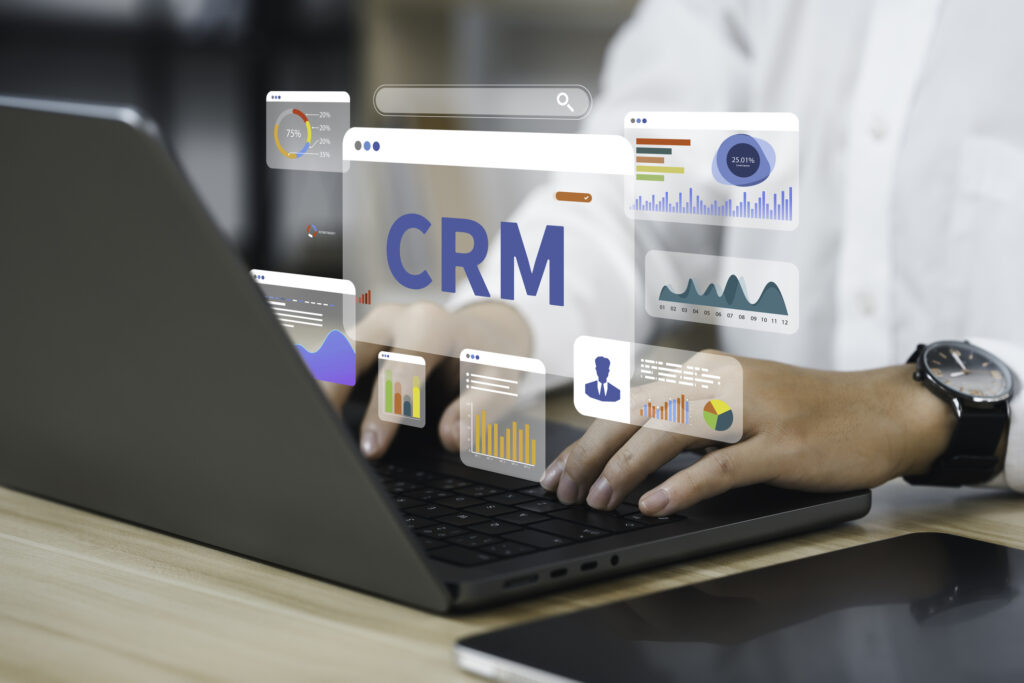Ready to transform your marketing operations with automation? This guide is designed to walk you through implementing marketing automation in a way that’s easy to understand and practical to apply. You’ll learn how to select the most suitable tools and develop a strategy that ensures your marketing is not just efficient, but also effective. Let’s dive in and unlock the efficiency your marketing efforts deserve.
Key Takeaways
- Marketing automation leverages tech to streamline repetitive tasks across multiple channels, enabling teams to focus on strategic thinking and creative processes, driving business growth and enhancing bottom-line results.
- A successful marketing automation strategy involves assessing business needs, setting SMART goals, and identifying areas suitable for automation while maintaining personal customer interactions.
- Choosing the right marketing automation platform is critical and should be based on business needs, goals and resources — taking factors such as ease of use, integration, scalability, and cost into consideration to ensure a worthy return on investment (ROI).
Understanding Marketing Automation
Marketing automation has transformed the way businesses operate, efficiently managing marketing processes and campaigns across various channels. It acts as a highly efficient digital marketing team that is available 24/7.
The main aim of implementing marketing automation is not just to streamline tasks and save time, but also to drive business growth and improve bottom-line results. With its powerful reporting capabilities, it offers better visibility for timely responses leading to increased sales revenue generation — making it an integral component in achieving success in today’s digital landscape.
What is Marketing Automation?
Marketing automation is a powerful tool that utilises software to streamline various marketing processes, simplifying tasks and boosting overall efficiency. The key lies in choosing the appropriate marketing automation software, which can effectively automate tasks such as email marketing, social media posting, and data analysis. By managing these daily responsibilities through automation, businesses can enhance productivity with ease.
The scope of automated solutions extends beyond just a few specific tasks within the realm of digital advertising. Modern-day marketing automation platforms are capable of automating an array of procedures including email campaigns, social media management for organic posts or paid ads on social media, lead tracking & nurturing strategies and content curation across multiple channels – all this helps marketers alleviate their repetitive workload and make room for more pressing tasks.
Automation also eliminates redundancy by taking care of repetitive tasks related to maintaining engaging campaign messages over long periods through multichannel approaches. This way, you can save lots of energy while ensuring everything works seamlessly, ultimately helping your brand reach out more prominently into today’s increasingly connected world.
The Role of Marketing Automation in Business Growth
The primary benefit of marketing automation is its ability to fuel the growth of a business. By harnessing valuable customer data and insights, targeted campaigns that resonate with your audience can be delivered — resulting in higher conversion rates, increased customer engagement, and ultimately more sales.
It goes beyond just numbers, as it also provides invaluable information about customers. By examining customer interaction trends and content preferences, your brand can gain a deeper insight into crafting strategies that resonate with your audience, leading to more personalised and effective marketing campaigns.
This not only improves campaign performance but enhances the overall customer experience leading to loyalty-building which drives long-term growth.
In today’s highly competitive market, where effective interaction with potential customers is key, leveraging personalised approaches through Marketing Automation can set your business up for success.
Assessing Your Business Needs for Marketing Automation
Before immersing yourself in the realm of marketing automation, you’ll need to evaluate your business needs. Here are some steps to follow:
- Identify your marketing goals.
- Determine which tasks can be automated.
- Ensure that your marketing automation strategy aligns with your business objectives and delivers the results you’re looking for.
These steps help you ensure that you develop an efficient and successful marketing automation strategy.
Guaranteeing the efficacy of your marketing initiatives is vital. By identifying areas for improvement in your current marketing processes, you can pinpoint tasks that would benefit from automation. This not only optimises your marketing efforts but also ensures an effective use of your resources. Simply put, it’s about prioritising smart work over hard work.
Setting Clear Objectives: SMART Goals
When it comes to marketing automation, having well-defined objectives is crucial. This is where SMART goals come in handy. SMART goals are;
1. Specific
They need to be well-defined and tailored specifically to your desired outcome.
2. Measurable
They need to be within specific criteria to help you gauge how close you are to achieving them.
3. Achievable
They are realistic to achieve or maintain within the set time frame.
4. Relevant
They align with the long-term goals and values of your business.
5. Time-bound
They are set to be completed within a specific time frame.
These are important factors to ensure that your goals are clearly defined and aligned with your overall marketing strategy.
Setting SMART goals can greatly improve focus on achieving specific targets related to market success, allowing them to be more effectively tracked and optimised to yield improved results.
Identifying Areas for Automation
The successful execution of marketing automation involves identifying areas that can be automated to save time and resources. This requires an audit of current processes and determining which tasks could benefit from automation.
It is important to note that not all aspects of marketing are suitable for automation. Strategic planning, direct communication with customers, and handling negative feedback require a human touch. Striking the right balance between automation and maintaining personalisation is crucial in ensuring effective results in your overall marketing efforts.
Choosing the Right Marketing Automation Platform
With a number of platforms available, each with its unique features and advantages, it’s essential to consider your business objectives and resources to find the platform that best fits your needs. Some popular options on the market include HubSpot, Marketo, Pardot, and Mailchimp.
When considering these platforms, pricing structures may vary depending on their range of services. For example, Hubspot or CleverTap have more affordable options while others like Pardot and Marketo are pricier alternatives. That being said, cost should not be the only factor influencing your decision.
Factors to Consider
Several factors come into play when selecting a marketing automation platform. The extent of automation you need, integration with existing tools, and the scalability of the platform are all important considerations. The right platform should be able to automate the tasks you need, integrate seamlessly with your existing systems, and grow with your business.
The platform’s user-friendliness is another critical aspect to consider. After all, the main goal of marketing automation is to make your life easier, not more complicated. Conducting usability testing and using a detailed checklist to assess the features and functionality of the platform can help you make an informed decision and narrow down your platform of choice.
Useful Marketing Automation Tools
There are plenty of marketing automation tools to choose from, each claiming to have unique features and benefits. One example is HubSpot which offers bulk email sending, lead tracking and retargeting options, as well as the ability to segment and target specific customer groups. In contrast, Mailchimp has more advanced automated multichannel capabilities that can scale with your business.
Another valuable tool is SendinBlue, known for its affordable pricing model and user-friendly interface. Meanwhile, Hootsuite focuses on social media management, offering distinct features such as monitoring streams, comprehensive inbox messaging, and AI-assisted content creation tools. The key lies in exploring different platforms and finding one that aligns with your company’s needs and objectives.
Building Your Marketing Automation Strategy
Once you have a strong understanding of your business needs and have chosen the appropriate marketing automation platform, the next step is to develop a well-crafted marketing automation strategy. This involves creating detailed buyer personas, mapping out the customer journey, and producing targeted content that will effectively engage customers at each stage of their interaction with your brand.
A successful marketing automation strategy should be focused on meeting customer needs and achieving specific objectives. By gaining insight into what motivates your target audience — including their preferences, behaviours, and pain points — you can create an effective plan for delivering personalised messages through automated processes. Not only does this improve overall marketing effectiveness, but it also enhances the overall customer experience, which ultimately leads to increased loyalty and repeat business.
Creating Buyer Personas
Developing buyer personas is an essential component of a successful marketing automation strategy. A buyer persona refers to a detailed representation of your ideal customer, derived from real customer data. By comprehending the traits and behaviours of your typical customers in response to marketing efforts, you can obtain valuable insights that will guide your automation strategy.
The process for creating effective buyer personas includes:
- Gathering input from internal stakeholders.
- Conducting extensive research on existing customer profiles.
- Creating comprehensive persona profiles based on the collected information.
- Continuously updating and improving these personas with ongoing feedback and further data analysis.
Depending on individual business needs and characteristics, companies may develop anywhere between three to five different buyer personas during this process.
Mapping the Customer Journey
Developing a comprehensive marketing automation strategy involves an essential step of mapping out the customer journey. This refers to understanding the series of actions and behaviours that a consumer goes through before, during, and after making a purchase. With this knowledge, you can customise your marketing techniques to cater to their specific needs at each stage.
To aid in effectively managing the customer journey, there are various features offered by marketing automation tools such as creating visual representations called “customer journey maps”, guiding personalised email content based on individual preferences and analysing cross-channel paths taken by customers. These tools also allow for constant reassessment and adjustment of your existing strategies.
By gaining insights into how customers navigate through their decision-making process towards purchasing products or services from your business via charts depicting different stages involved known as “the customer journey”, marketers can deliver more impactful campaigns with increased engagement levels using these advanced automation tools.
Developing Targeted Content
Developing customised content is an essential component of a successful marketing automation strategy. By carefully considering the needs and preferences of your target audience, as well as their journey to becoming customers, you can create content that resonates with them on a personal level. This tailored approach not only engages potential customers but also boosts conversion rates and sales.
The process of creating targeted content involves several key steps:
- Identifying your specific audience and desired outcomes, then selecting appropriate software tools to aid in implementation.
- Mapping out the customer journey and understanding where they are at each stage allows you to deliver relevant messaging along the way.
- Crafting corresponding content based on this information ensures the timely delivery of valuable material that encourages action from leads throughout every step towards becoming loyal buyers.
Providing pertinent, useful material in real-time through marketing automation techniques like email campaigns or personalised website experiences catered specifically toward these personas creates opportunities for engagement across various touchpoints within the customer’s decision-making process, ultimately converting them into committed purchasers.
Implementing and Optimising Marketing Automation Workflows
A crucial aspect of your marketing automation journey is effectively executing and enhancing automated workflows. This includes creating workflows based on customer behaviour, regularly monitoring their performance, and consistently analysing and optimising them.
You may already be using various forms of automated workflows in your marketing efforts. These can range from sending out automated emails to scheduling social media posts or tracking leads — all essential elements for a successful marketing automation strategy. By fine-tuning these workflows, we’re not just saving time — we’re also working smarter.
Setting Up Workflows
Designing workflows in your marketing automation platform involves outlining the triggers, actions, and conditions that guide customers through the marketing process. For instance, a trigger could be when a customer fills out a lead form, while an action might involve sending them a follow-up email and a condition may depend on whether or not they open the email.
When setting up conditions within your workflow, it is important to consider specific criteria for its function. This includes determining how contacts will enter into the workflow (entry points), what actions will occur based on certain conditions being met (defined actions), when contacts should exit from the flow (exit conditions), and under what circumstances contacts can re-enter after exiting previously (restart conditions).
Monitoring Performance and Adjusting Strategies
It is crucial to monitor the performance of your marketing automation endeavours to achieve your desired goals. Key metrics such as conversion rate, lead generation, and customer retention should be tracked regularly to gauge the effectiveness of campaigns and inform data-driven decisions for improvement.
Making necessary adjustments based on campaign outcomes is equally vital. This may entail refining buyer personas, optimising email timing or modifying content to better engage target audiences. Continually monitoring and adapting strategies allows you to ensure that your marketing automation efforts are yielding optimal results.
Overcoming Common Marketing Automation Challenges
Marketing automation comes with a variety of benefits, but it also brings unique obstacles. Inaccurate data and difficulties in integration can hinder the success of campaigns while striking the right balance between automated processes and personalised approaches requires careful navigation. These challenges can be overcome through strategic planning and continuous refinement.
The key to overcoming these hurdles is adopting a customer-centric mindset. By prioritising the needs and preferences of your customers throughout all aspects of marketing automation strategies, you not only ensure efficiency but also deliver an engaging personal experience for each individual customer.
Data Quality and Integration
Effective marketing automation is often hindered by the challenges of maintaining data quality and ensuring seamless integration. Accurate customer data is crucial to personalise your marketing strategies and provide content that resonates with your audience. To overcome these obstacles, it’s important to have measures in place such as regular reporting for error detection within systems, and utilising Robotic Process Automation (RPA) technology to streamline and improve data management processes.
Proper integration between your chosen marketing automation platform and existing systems like CRM is key in allowing a smooth transfer of valuable information across platforms. This ensures that all components work seamlessly towards enhancing the overall efficiency of automation tools when executing targeted marketing efforts aimed at customers.
Balancing Automation and Personalisation
Finding the right balance between automation and personalisation can be a common challenge in marketing automation. While utilising automated processes can save time and increase productivity, it is important to maintain a human touch when interacting with customers. After all, each customer has their own unique needs and preferences that should be valued and acknowledged.
Effective strategies for achieving this balance include incorporating personalised planning into your approach, using automation as a tool to enhance engagement and conversions, as well as providing relevant content at opportune times. By finding harmony between these two elements of marketing automation – automation versus personalisation – businesses can efficiently connect with customers while also building meaningful relationships based on understanding individual wants.
Summary
Marketing automation is a valuable tool that has the potential to revolutionise your business operations. It can simplify repetitive tasks, offer personalised content, and provide significant insights, ultimately leading to increased business growth, improved efficiency and enhanced customer experience. Whether you are just starting or looking for ways to enhance current practices, it’s essential to understand your specific needs as well as select an appropriate platform while consistently monitoring and adjusting strategies for success.
Frequently Asked Questions
What is the purpose of marketing automation?
Marketing automation serves the purpose of increasing efficiency, streamlining processes and promoting business growth through the automated execution of repetitive tasks and tailored delivery of content. Think of it as your marketing bestie who can support you to save time and energy!
The main objective behind marketing automation is to streamline duties that are time-consuming or routine in nature, resulting in improved productivity for businesses. Automation enables the streamlining of these tasks.
How do you implement a marketing automation platform?
To successfully implement marketing automation software, it is important to first create a detailed plan and set specific requirements and the necessary technical aspects. Next, importing relevant data and integrating it with your CRM system are crucial steps in ensuring a smooth implementation process. Lastly, getting buy-in from your team will greatly contribute to the successful adoption of marketing automation within your organisation.
How do I get started in marketing automation?
To get started in marketing automation, you should first get to know your customers and data, map your customer journey, craft a content strategy, build your email distribution list, and then course-correct through consistent monitoring and optimisation.
How can businesses overcome common marketing automation challenges?
To successfully address common issues with marketing automation, companies should prioritise a customer-centric mindset and regularly fine-tune their tactics to tackle issues such as data accuracy and integration, as well as finding the right balance between automated processes and personalised interactions.
We’re always happy to chat about marketing automation and its possibilities. If you’re curious or have a project in mind, feel free to get in touch with us — we love a good conversation!












